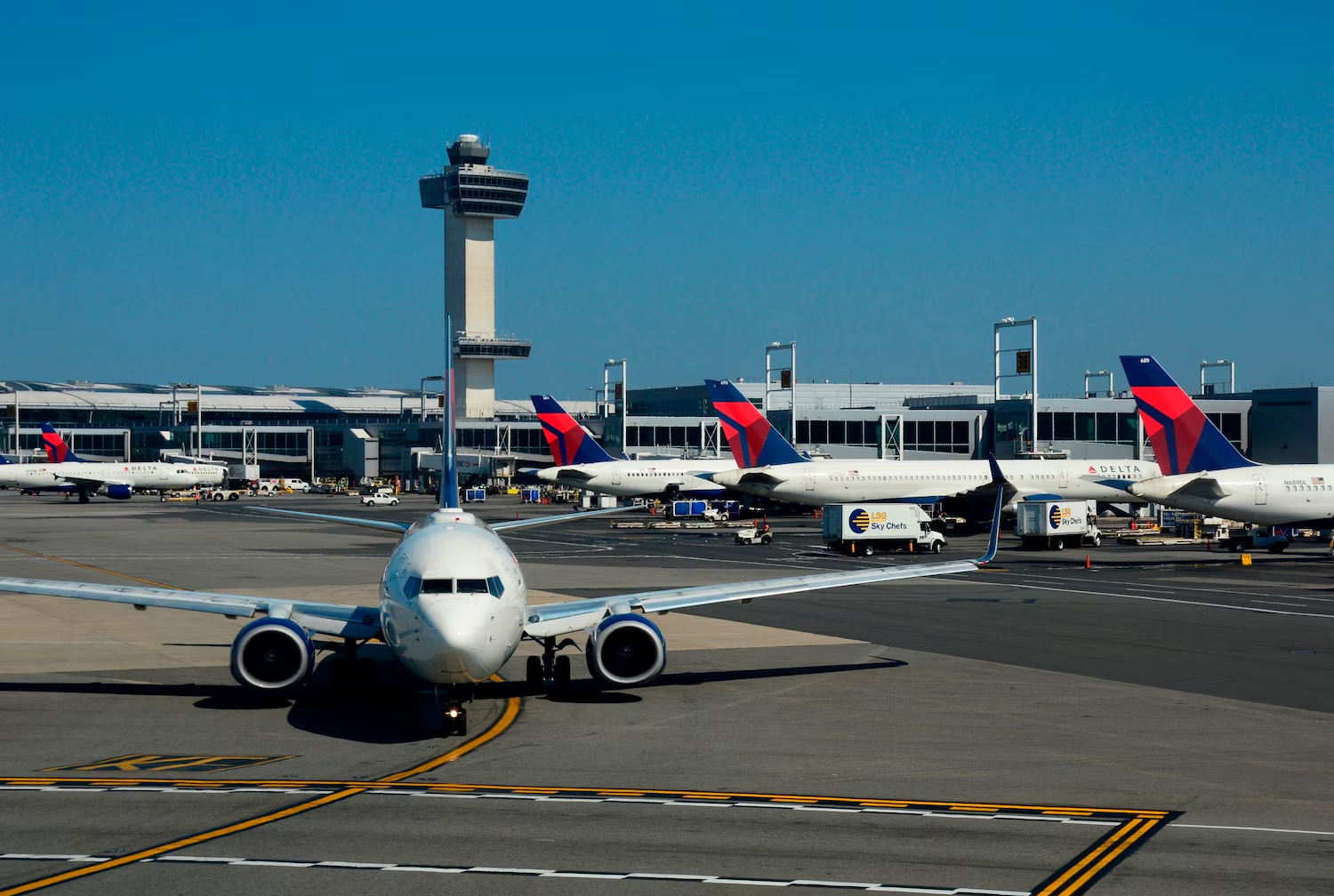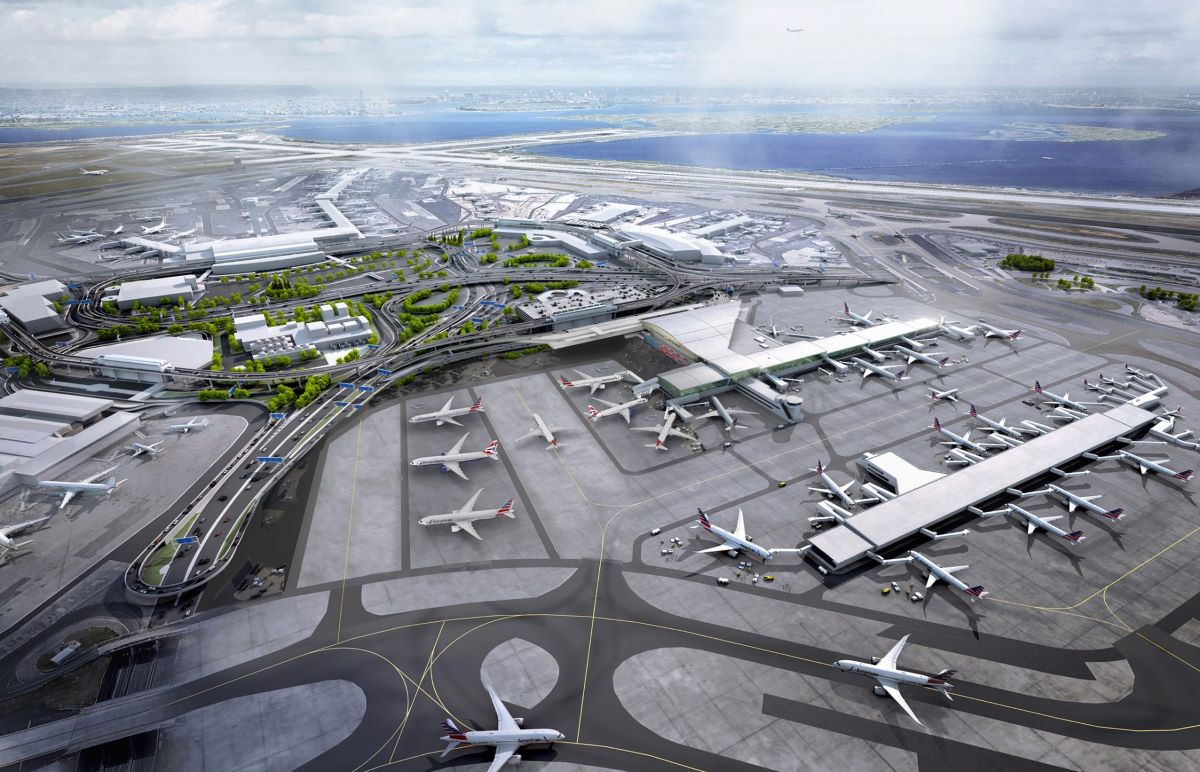A Delta pilot maintained a calm demeanor on Friday night despite a near collision with an American Airlines plane that had mistakenly entered the runway.
The pilot, who remains unnamed, was recorded in audio from the John F. Kennedy International Airport air traffic control tower, mentioning that he would need to make a few phone calls regarding the narrowly avoided crash.
“Yeah, we’re gonna have to go somewhere, run a couple of checklists and probably make some phone calls for Delta 1943,” the pilot said calmly, noting that he expected the crew would just return to the gate.
The Boeing 737 he was piloting was traveling at 115 mph down the runway at the New York airport around 8:45 p.m. when an air traffic controller observed that an American Airlines flight to the UK had crossed from an adjacent runway directly in front of the departing Delta plane, ABC 7 reports.
Air Traffic Control had instructed the American Airlines flight to cross “runway 31L at Kilo,” but instead, the plane crossed runway 4 Left at Juliet, directly in the path of the departing Delta flight.
An air traffic controller who recognized the situation is heard on radio exchanges exclaiming, “S***! F***! Delta 1943, cancel takeoff clearance! Delta 1943, cancel takeoff clearance!”
There was panic at JFK on January 13 when a Delta jet was compelled to abort its takeoff after a near miss with an American Airlines aircraft. An air traffic controller was heard saying “S***!” as he noticed the American jet crossing from an adjacent taxiway, instructing the other plane, “Delta 1943 cancel takeoff clearance!”
The Delta pilot was forced to brake abruptly, traveling an additional 661 feet before coming to a complete stop with just 1,000 feet remaining before the plane would have collided with the American Airlines Boeing 777, according to a preliminary statement from the Federal Aviation Administration.
The Delta flight was then forced to return to the gate and did not take off again until the following morning, while the American Airlines flight arrived in the UK on time.
Donall Brian Healy, one of the 145 passengers aboard the Delta flight, described how the Boeing 737 had to stop just two to three seconds after beginning its acceleration down the runway, which thrust passengers forward in their seats.
“We’re talking split seconds here, but the initial cognition is this is not going to end well,” he told.
“There were vocal reactions,” he said. “A few screams when the plane first started slowing, then total silence.”
He added in an interview with Business Insider that he “felt a surge of adrenaline knowing this was not normal and not knowing what to expect.”
“As the plane came to a stop, I realized we’d be OK — I thought it was a mechanical thing.”
Healy said the pilot informed passengers that another plane had crossed in front of them, necessitating the abort of the takeoff. He chose to cancel his flight afterward and received a full refund.

It is not clear how many people were on board the American Airlines Boeing 777, but these aircraft typically have 37 business seats, 24 premium economy seats, 66 standard seats, and 146 main cabin seats.
Both the FAA and the National Transportation Safety Board are now investigating the incident. It remains unclear what actions were taken by the pilots afterward, though the American Airlines pilot was required to call a number for “possible pilot deviation.”
On January 13, a Delta flight was accelerating at 115 mph down the runway when an American Airlines plane crossed onto the wrong runway, directly leading to the Delta flight’s aborted takeoff.
An American Airlines aircraft was observed crossing the Delta flight’s path as it was about to take off. Air traffic control expressed alarm with “s***!” upon noticing the potential collision and ordered the Delta flight to abort takeoff.
Audio recordings suggest that the American Airlines pilot did not follow Air Traffic Control’s instructions accurately. According to the Aviation Herald, the American Airlines flight was on taxiway B for departure from runway 04L and was cleared to cross runway 31L on taxiway K. Instead, the aircraft continued on, joining taxiway J and crossing runway 04L.
Simultaneously, the Delta flight, cleared for takeoff from runway 04L, was accelerating when Air Traffic Control noticed the conflict. A controller acted swiftly to prevent a collision.
“S***! F***! Delta 1943, cancel takeoff clearance! Delta 1943, cancel takeoff clearance!” the controller said in an audio recording of Air Traffic Control communications.
The recording, made by LiveATC, a website that monitors and posts flight communications, shows the controller instructing the Delta flight to taxi. The plane had previously been cleared for takeoff.
Air Traffic Control then directed the American Airlines flight crew to call a number “due to possible pilot deviation.” The American Airlines pilot inquired if the last clearance was accurate.
An air traffic controller replied, “I guess we’ll listen to the tapes, but you were supposed to depart 4L. You’re currently holding short of runway 31L.”
The Delta flight eventually took off for Santa Domingo Airport in the Dominican Republic the next morning, while the American Airlines flight arrived on time at London Heathrow on Saturday morning.
The incident involved a near-miss where the two planes came within 1,000 feet of each other before the Delta flight came to a halt. The Delta aircraft had been cleared for takeoff and was preparing to depart for Santa Domingo.
The Federal Aviation Administration categorizes runway incursions into four levels, ranging from Category D (least serious) to Category A (most severe). Category A incursions involve a situation where a collision was narrowly avoided.
Mary Schiavo, a former U.S. Department of Transportation general, classified the January 13 incident as a Category A incursion, noting that such occurrences are becoming more frequent.
A Delta spokesperson stated that the airline would collaborate with and assist aviation authorities in a comprehensive review of Flight 1943’s aborted takeoff procedure at New York-JFK. “We apologize to our customers for the inconvenience and delay of their travels.”
American Airlines declined to comment on the incident, deferring all inquiries to the FAA.
John Cox, a retired pilot and aviation safety professor at the University of Southern California, remarked that the Delta crew followed proper procedures and praised the controller for the timely decision to abort the takeoff. Cox emphasized that pilots are well-trained for rejected takeoff procedures.
People took to Twitter to express their shock and relief that no one was injured, with some comparing the incident to the Tenerife Airport Disaster of 1977, where two Boeing 747s collided on the runway, resulting in 583 fatalities, making it the deadliest aviation accident in history.







Leave a Reply